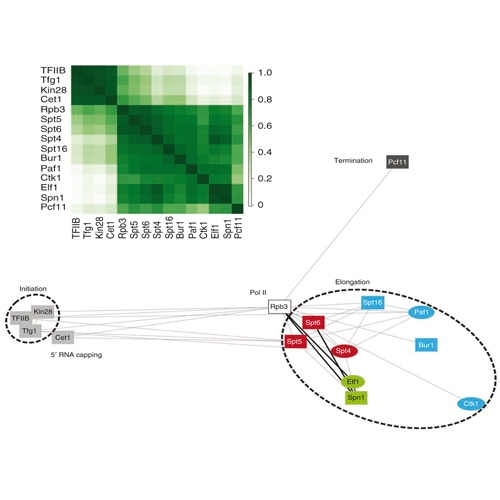Uniform transitions of the general RNA polymerase II transcription complex
05-Sep-2010
Nature Structural & Molecular Biology, 2010, 17, doi:10.1038/nsmb.1903 published on 05.09.2010
Nature Structural & Molecular Biology, online article
We present genome-wide occupancy profiles for RNA polymerase (Pol) II, its phosphorylated forms and transcription factors in proliferating yeast. Pol II exchanges initiation factors for elongation factors during a 5′ transition that is completed 150 nucleotides downstream of the transcription start site (TSS). The resulting elongation complex is composed of all the elongation factors and shows high levels of Ser7 and Ser5 phosphorylation on the C-terminal repeat domain (CTD) of Pol II. Ser2 phosphorylation levels increase until 600–1,000 nucleotides downstream of the TSS and do not correlate with recruitment of Spt6 and Pcf11, which bind the Ser2-phosphorylated CTD in vitro. This indicates CTD-independent recruitment mechanisms and CTD masking in vivo. Elongation complexes are productive and disassemble in a two-step 3′ transition. Paf1, Spt16 (part of the FACT complex), and the CTD kinases Bur1 and Ctk1 exit upstream of the polyadenylation site, whereas Spt4, Spt5, Spt6, Spn1 (also called Iws1) and Elf1 exit downstream. Transitions are uniform and independent of gene length, type and expression.











